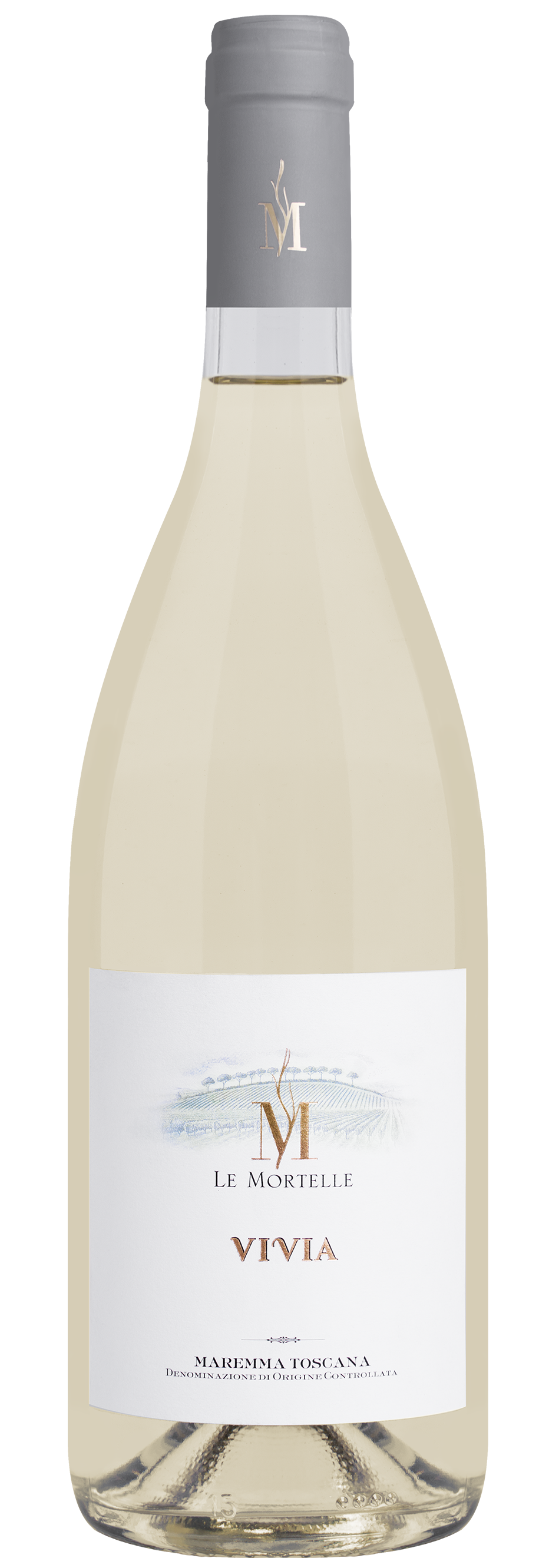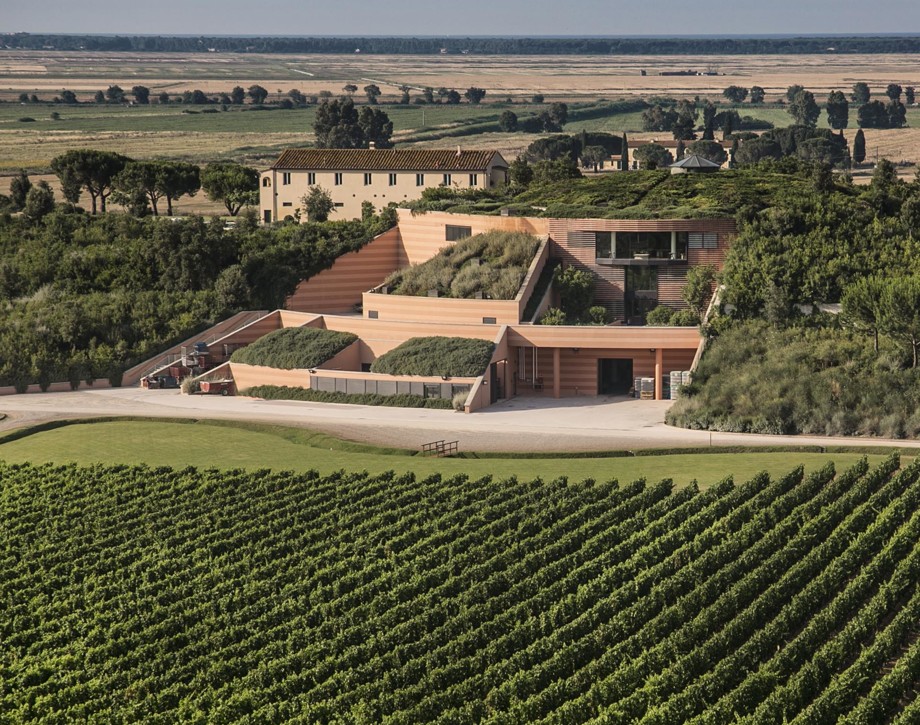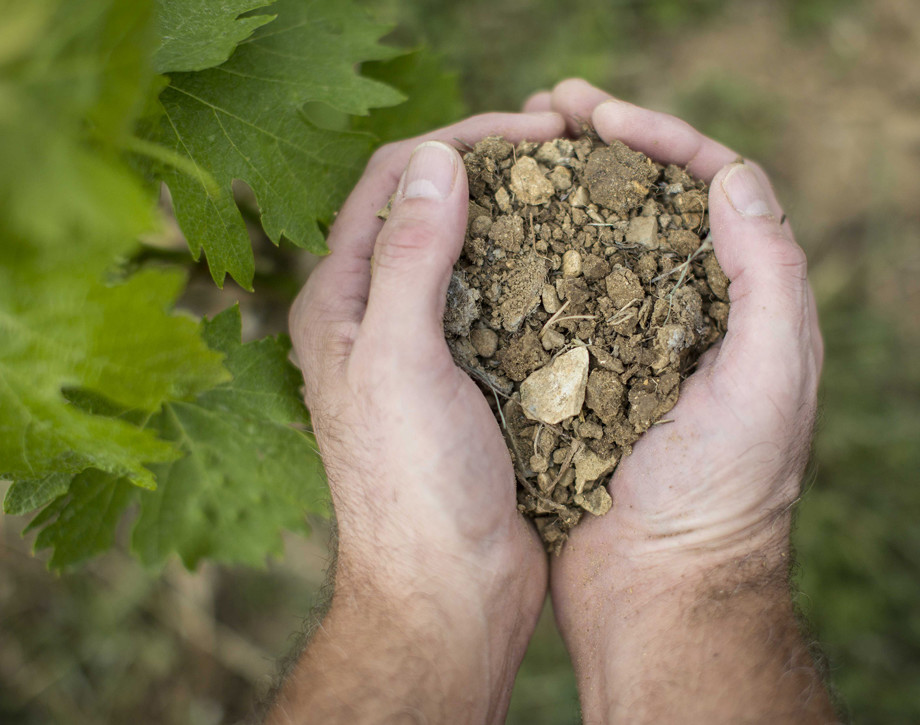Vivia

Climate
The 2022 growing season began with relatively cold temperatures in winter that led to a slight delay in budbreak. Conditions changed with the arrival of spring that brought higher than average temperatures, making up for the initial delay, and prompting flowering in line with seasonal averages. The summer months were hot and dry however rain showers scattered across the area towards the end of August ensuring optimal ripening of whole healthy clusters. The grape harvest began the first week of September. The first variety to be picked was Viognier whose berries were defined by sweet aromas of ripe fruit and continued with Vermentino that presented distinctive notes of citrus fruit. The harvest was concluded with Ansonica with berries that imparted excellent savory notes.
Vinification
Upon arrival in the cellar, the grapes were gently pressed, and each grape variety was fermented separately to accentuate their unique characteristics. The must was cooled down to a controlled temperature of 10° C (50°F) for 24 hours to favor natural clarification. The clarified must was transferred to temperature controlled stainless steel tanks for alcoholic fermentation at 16 °C (61 °F). Vivia was aged on the lees for a short period in stainless steel tanks, approximately three months, before being bottled in January 2023.
Historical Data
The Mortelle estate is in the heart of Maremma in Tuscany, near the town of Castiglione della Pescaia set in an extraordinary and fascinating position both for the territory’s unparalleled natural beauty and its historical heritage and culture. The Antinori family has been part of this territory for generations. Evidence of ownership of land in this area is recorded on a property deed dated 1863. It states their ownership of Poggio Franco, one of the best vineyards on the estate, together with other parcels of land. Since 1999, when the property was acquired, the family has dedicated their efforts to improving the vineyards and building the new winery with the firm belief that this area, slowly emerging on the Italian viticultural horizon, has great potential for the production of high quality wines. Varieties grown in this area can fully express their own characteristics as well as the exceptional qualities of the terroir. The soil is of medium consistency, sandy and loamy composed of clay and silica and in some parts of the estate is rich in rocky deposits. Vermentino and Ansonica, typical grape varieties cultivated in Tuscany’s costal area, grow alongside Viognier, a vine that has recently been planted after years of patient research to produce an elegant white wine expressing the colors and aromas of the Maremma coastline.
Tasting Notes
Vivia 2022 is straw yellow in color with bright green hues. The nose delivers an intense impact with rich aromas of ripe fruit especially pears, apples, and pineapple in perfect harmony with delicate notes of orange blossoms and chamomile. The elegant bouquet is completed by hints of citrus fruit and Mediterranean herbs redolent of sage. The palate is lively and savory with a fresh finish that lingers, with notes of lemons and rosemary.

The Wine
This wine is harvested from vineyards indigenous to the Tuscan coast, a blend of Vermentino and Viognier and a small percentage of Ansonica: a successful result of patient research that produced an elegant white wine expressing the colors and aromas of the Maremma coastline.

Climate
The 2022 growing season began with relatively cold temperatures in winter that led to a slight delay in budbreak. Conditions changed with the arrival of spring that brought higher than average temperatures, making up for the initial delay, and prompting flowering in line with seasonal averages. The summer months were hot and dry however rain showers scattered across the area towards the end of August ensuring optimal ripening of whole healthy clusters. The grape harvest began the first week of September. The first variety to be picked was Viognier whose berries were defined by sweet aromas of ripe fruit and continued with Vermentino that presented distinctive notes of citrus fruit. The harvest was concluded with Ansonica with berries that imparted excellent savory notes.
Vinification
Upon arrival in the cellar, the grapes were gently pressed, and each grape variety was fermented separately to accentuate their unique characteristics. The must was cooled down to a controlled temperature of 10° C (50°F) for 24 hours to favor natural clarification. The clarified must was transferred to temperature controlled stainless steel tanks for alcoholic fermentation at 16 °C (61 °F). Vivia was aged on the lees for a short period in stainless steel tanks, approximately three months, before being bottled in January 2023.
Historical Data
The Mortelle estate is in the heart of Maremma in Tuscany, near the town of Castiglione della Pescaia set in an extraordinary and fascinating position both for the territory’s unparalleled natural beauty and its historical heritage and culture. The Antinori family has been part of this territory for generations. Evidence of ownership of land in this area is recorded on a property deed dated 1863. It states their ownership of Poggio Franco, one of the best vineyards on the estate, together with other parcels of land. Since 1999, when the property was acquired, the family has dedicated their efforts to improving the vineyards and building the new winery with the firm belief that this area, slowly emerging on the Italian viticultural horizon, has great potential for the production of high quality wines. Varieties grown in this area can fully express their own characteristics as well as the exceptional qualities of the terroir. The soil is of medium consistency, sandy and loamy composed of clay and silica and in some parts of the estate is rich in rocky deposits. Vermentino and Ansonica, typical grape varieties cultivated in Tuscany’s costal area, grow alongside Viognier, a vine that has recently been planted after years of patient research to produce an elegant white wine expressing the colors and aromas of the Maremma coastline.
Tasting Notes
Vivia 2022 is straw yellow in color with bright green hues. The nose delivers an intense impact with rich aromas of ripe fruit especially pears, apples, and pineapple in perfect harmony with delicate notes of orange blossoms and chamomile. The elegant bouquet is completed by hints of citrus fruit and Mediterranean herbs redolent of sage. The palate is lively and savory with a fresh finish that lingers, with notes of lemons and rosemary.

Fattoria Le Mortelle
The Mortelle estate is in the heart of Maremma in Tuscany, near the town of Castiglione della Pescaia set in an extraordinary and fascinating position both for the territory’s unparalleled natural beauty and its historical heritage and culture. The Antinori family has been part of this territory for generations. Evidence of ownership of land in this area is recorded on a property deed dated 1863. It states their ownership of Poggio Franco, one of the best vineyards on the estate, together with other parcels of land. Since 1999, when the property was acquired, the family has dedicated their efforts to improving the vineyards and building the new winery with the firm belief that this area, slowly emerging on the Italian viticultural horizon, has great potential for the production of high quality wines. Varieties grown in this area can fully express their own characteristics as well as the exceptional qualities of the terroir. The property extends over an area of 270 hectares (667 acres) 170 of which (420 acres) are planted with vineyards of Cabernet Sauvignon, Cabernet Franc and other more recently planted vineyards with white grape varieties such as Vermentino, Ansonica, Viognier and a small parcel of Carménère. The soil is of medium consistency, sandy and loamy composed of clay and silica and in some parts of the estate is rich in rocky deposits.

Soil
Loamy soil with sand and silt.
















